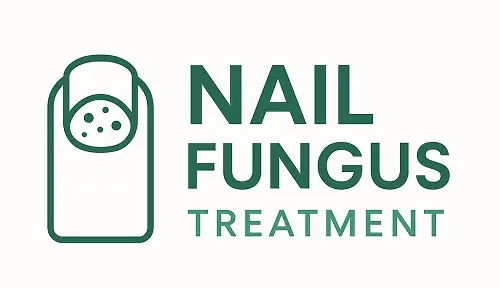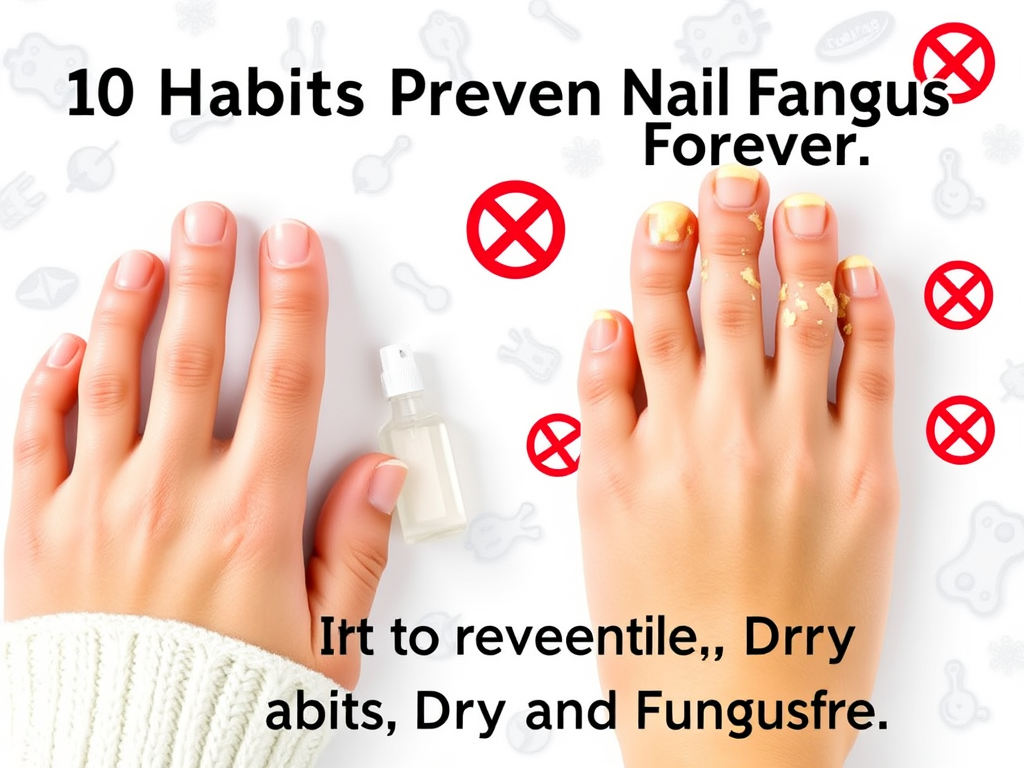Nail fungus, medically known as onychomycosis, is a common yet stubborn condition that affects millions of people worldwide. It can cause discoloration, thickening, and even crumbling of the nails, leading to discomfort and embarrassment. While treatments are available, prevention is always better than cure.
The good news? You can significantly reduce your risk of developing nail fungus by adopting simple, everyday habits. In this comprehensive guide, we’ll explore 10 proven habits that help keep fungal infections at bay—forever.
1. Keep Your Feet Clean and Dry
Fungi thrive in warm, moist environments, making sweaty feet a prime target. To prevent fungal growth:
- Wash your feet daily with antibacterial soap.
- Dry them thoroughly, especially between the toes.
- Use antifungal powder if you’re prone to excessive sweating.
Pro Tip: After showering, take an extra minute to ensure no moisture remains trapped under your nails.
2. Wear Breathable Footwear
Tight, non-breathable shoes create a breeding ground for fungus. Opt for:
- Leather or mesh shoes that allow air circulation.
- Moisture-wicking socks (cotton or wool blends).
- Open-toed sandals in warm weather to reduce sweat buildup.
Avoid: Plastic shoes or synthetic socks that trap moisture.
3. Change Socks Frequently
Damp socks encourage fungal growth. Make it a habit to:
- Change socks at least once a day (more if you sweat heavily).
- Use clean, dry socks after workouts or outdoor activities.
- Rotate shoes to allow them to air out between uses.
Bonus: If your feet get wet (rain, swimming), change socks immediately.
4. Practice Proper Nail Hygiene
Neglected nails are more susceptible to infections. Follow these steps:
- Trim nails straight across (rounded edges can lead to ingrown nails).
- File nails regularly to prevent cracks where fungi can enter.
- Disinfect nail tools before and after use (rubbing alcohol works well).
Warning: Avoid cutting cuticles too aggressively—they act as a barrier against infections.
5. Never Walk Barefoot in Public Areas
Public pools, gyms, and showers are hotspots for fungal infections. Protect yourself by:
- Wearing flip-flops or shower shoes in locker rooms.
- Avoiding shared nail clippers or files at salons.
- Using a personal towel instead of communal ones.
Did You Know? Athlete’s foot (a fungal infection) can spread to nails if untreated.
6. Strengthen Your Immune System
A strong immune system fights off fungal infections naturally. Boost yours by:
- Eating a balanced diet (rich in probiotics, vitamins, and zinc).
- Staying hydrated to flush out toxins.
- Getting enough sleep (7-9 hours nightly).
Superfoods for Nail Health: Garlic, yogurt, almonds, and leafy greens.
7. Avoid Sharing Personal Nail Items
Fungal spores can linger on nail clippers, files, and shoes. Always:
- Use your own tools for manicures and pedicures.
- Sanitize borrowed tools if sharing is unavoidable.
- Never share shoes or socks—fungus spreads easily.
Salon Safety Tip: Choose salons that sterilize equipment after each use.
8. Treat Sweaty Feet with Antifungal Products
If you have hyperhidrosis (excessive sweating), take extra precautions:
- Apply antifungal sprays or powders daily.
- Use moisture-absorbing insoles in shoes.
- Consider prescription antiperspirants if sweating is severe.
Natural Remedy: Soak feet in apple cider vinegar (1 part vinegar, 2 parts water) to kill fungus.
9. Choose Nail Polish Wisely
While polish makes nails look great, prolonged use can trap moisture and fungus:
- Let nails breathe—go polish-free occasionally.
- Use antifungal base coats before applying color.
- Avoid cheap, toxic polishes that weaken nails.
Warning: If you suspect a fungal infection, stop using polish until it clears.
10. Recognize Early Signs & Act Fast
The sooner you treat nail fungus, the easier it is to eliminate. Watch for:
- Yellow or white streaks under the nail.
- Thickened or brittle nails.
- Foul odor from the nail.
At-Home Treatment Options:
- Tea tree oil (antifungal properties).
- Vicks VapoRub (studies show it helps).
- Over-the-counter antifungal creams.
If symptoms persist, consult a dermatologist for prescription treatments.
Final Thoughts: Consistency is Key
Preventing nail fungus isn’t about drastic changes—it’s about small, consistent habits that keep your nails healthy. By following these 10 simple steps, you can dramatically reduce your risk and enjoy strong, fungus-free nails for life.
Remember: Healthy nails start with proper hygiene, smart footwear choices, and a strong immune system. Stay vigilant, and your nails will thank you!
FAQs About Nail Fungus Prevention
Q: Can nail fungus spread from person to person?
A: Yes, through direct contact or shared items like towels and nail tools.
Q: How long does it take to cure nail fungus?
A: Depending on severity, treatment can take 3-12 months—prevention is faster!
Q: Are some people more prone to nail fungus?
A: Yes, diabetics, older adults, and those with weakened immunity are at higher risk.
Q: Can nail fungus go away on its own?
A: Rarely—it usually worsens without treatment. Early action is crucial.
By integrating these habits into your daily routine, you can keep nail fungus at bay forever. Start today, and step forward with confidence—fungus-free!
Did you find this helpful? Share it with friends and family to spread the knowledge!

